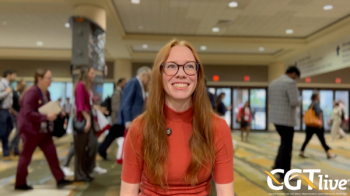
RGX-121 Advances to Final Cohort in Phase 1/2 MPS-II Study
The first patient has been enrolled and treated with RGX-121 in the third cohort of a phase 1/2 study for patients up to 5 years old with severe MPS II.
The first patient has been enrolled and treated with RGX-121 in the third cohort of a phase 1/2 study for patients up to 5 years old with severe mucopolysaccharidosis type II (MPS II), also known as Hunter syndrome, according to the developer of the gene therapy, REGENXBIO.
Eight pediatric patients were treated in 2 prior cohorts, with promising early data presented at the WorldSymposium in February 2021. Doses are being escalated in each cohort. In cohort 2, all patients had measurable I2S enzyme concentration in their cerebral spinal fluid (CSF) and cognitive development was seen in 4 of 5 patients with more than 6 months of follow up. Additionally, there was evidence of plasma and urine I2S enzyme levels increasing in 5 of 6 patients with adequate follow up.
Two patients were able to discontinue enzyme replacement therapy (ERT) at a protocol permitted 52-week evaluation. Additionally, 2 patients were ERT naive at baseline and have not yet required therapy, although follow up for these patients was just 4 and 24 weeks. In the 1 ERT-naive patient with 24 weeks of follow-up, significant reductions in liver and spleen dimensions were observed following RGX-121 treatment, without the need for ERT. Overall, there were no serious adverse events related to study drug. The target enrollment goal for the full study is 12 patients, allowing for 4 to be enrolled into cohort 3.
"We are pleased with our continued progress in the phase 1/2 trial of RGX-121 as we increase the dose level to further our understanding of the potential treatment effects, including potential systemic benefit for patients," Steve Pakola, MD, chief medical officer of REGENXBIO, said in a statement. "We are encouraged by the positive interim data we've reported previously from the first two cohorts, including signals of I2S enzyme activity in the CNS, continued neurocognitive development, and evidence of I2S enzyme activity in plasma and urine following administration of RGX-121. We look forward to further program updates later this year."
RGX-121 is an AAV9-based single intracisternal injection intended to deliver a functional copy of the iduronate-2-sulfatase (IDS) gene to the central nervous system. IDS encodes the I2S enzyme, which is deficient in MPS II and responsible for degradation of glycosaminoglycans (GAG). Although administered directly to the CNS, REGENXBIO theorizes that I2S enzyme secretion could also cross-correct non-transduced cells, leading to systemic improvements.
Patients in the first cohort of the study (n = 3) received RGX-121 at 1.3 x 1010 genome copies (GC)/gram of brain mass. In the second cohort (n = 5), the dose was 6.5 x 1010 GC/g. The dose administered in the third cohort is 2.0 x 1011 GC/g of brain mass. Following a single dose of the gene therapy, immunosuppression was administered for 48 weeks in the study, with a primary safety analysis at 24 weeks. Four patients had completed the immunosuppressive regimen and 2 were tapering off the treatment.
There was a consistent decrease in heparan sulfate (HS) in the CSF following RGX-121 treatment, which is a sign of I2S activity. The median change from baseline to week 8 across 6 assessable patients was -30.3% (P = .03). The median change from baseline to the last available assessment was -35.8% (P = .03). CSF I2S enzyme concentration ranged from 1170 to 1940 pg/mL in cohort 2 following RGX-121 administration.
In addition to HS, decreases were also seen in fully sulfated, long-chain D2S6 in the CSF, which has been connected with severe MPS II. The change from baseline to week 8 was -44.2% in 6 patients with adequate follow up (P = .03). Additionally, the change from baseline to last available data point was -39.2% (P = .03).
Other biomarker data showed promising signs of efficacy with RGX-121, including rapid decrease in urine GAGs in ERT-naive patients and no sign of GAG rebound following ERT discontinuation. There was an increase in plasma I2S enzyme levels in 5 of 6 patients, with varying degrees of increase ranging from a 231.8% elevation in plasma concentration to a 5029.9% improvement.
Neurodevelopment function was available for 5 patients, and 3 were within the parameters for normal development following RGX-121 treatment. The remaining 2 patients entered the study with significant cognitive delays, 1 of which showed continued development and the other did not meet all the requirements for continued development.
The primary completion date for the phase 1/2 study is set for May 2021, with full study completion and follow up targeted for December 2023 (NCT03566043). In addition to the study for pediatric patients under 5 years of age, another study is assessing RGX-121 for patients age 5 to 18. This phase 1/2 study is utilizing the cohort 2 dose of 6.5 x 1010 GC/g of brain mass (NCT04571970).
Newsletter
Stay at the forefront of cutting-edge science with CGT—your direct line to expert insights, breakthrough data, and real-time coverage of the latest advancements in cell and gene therapy.
















































